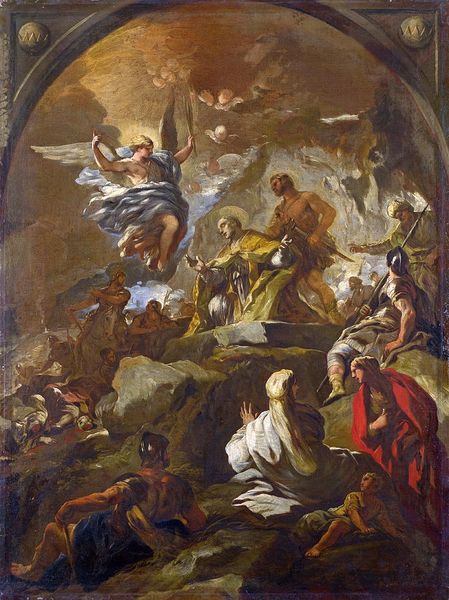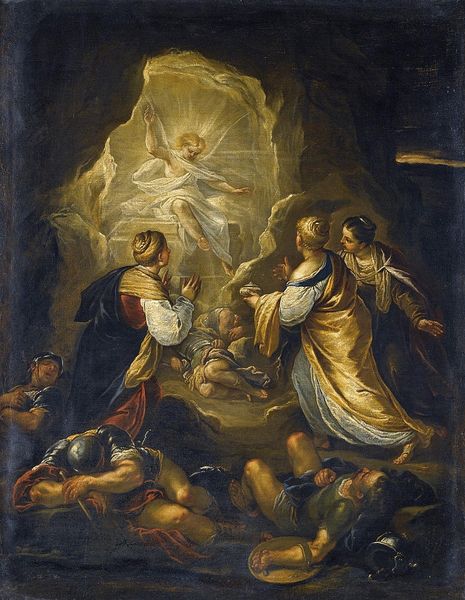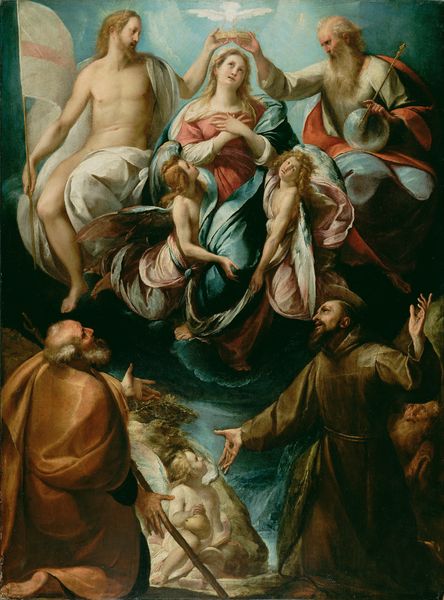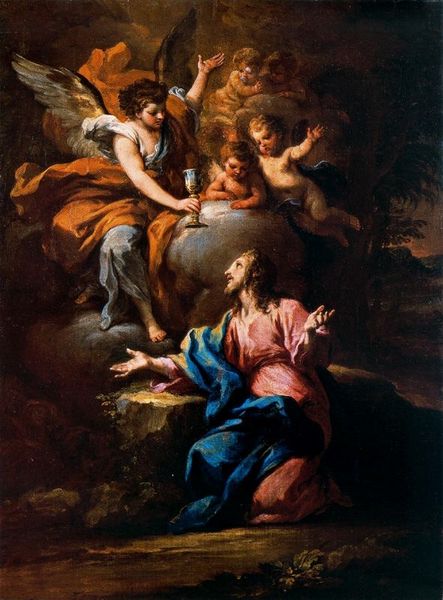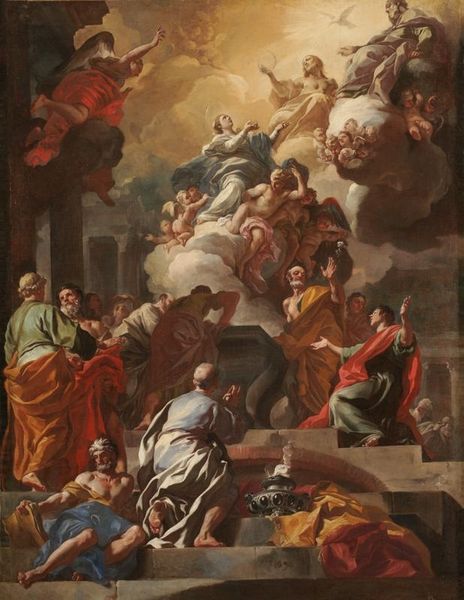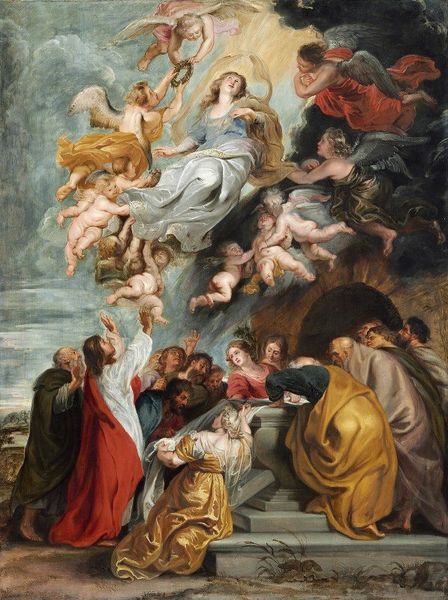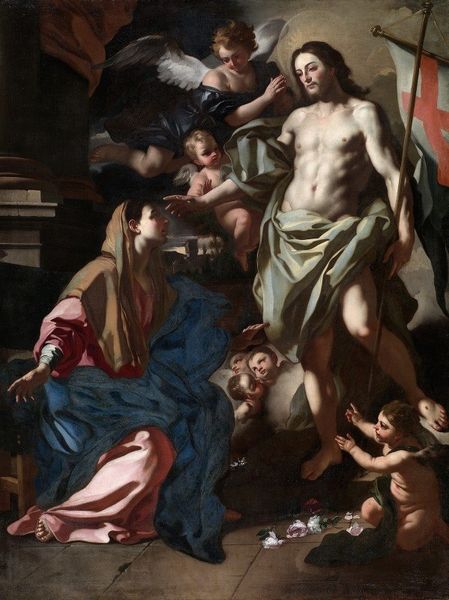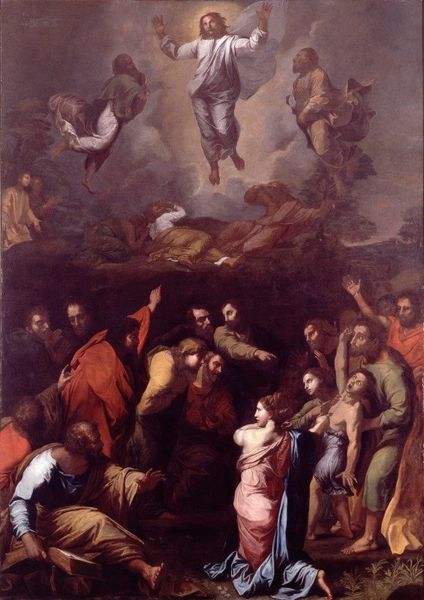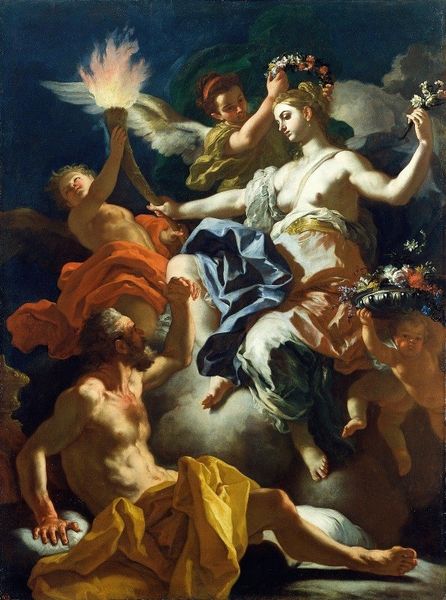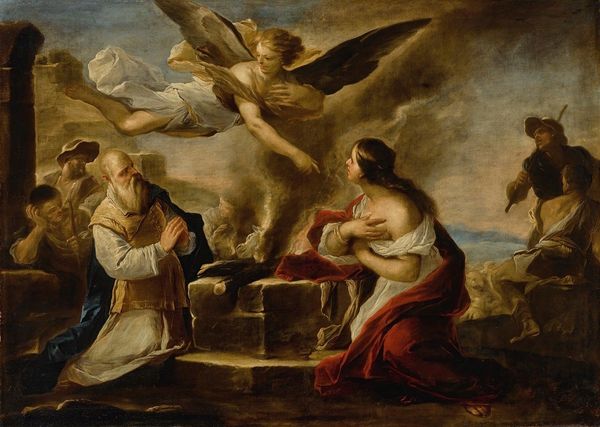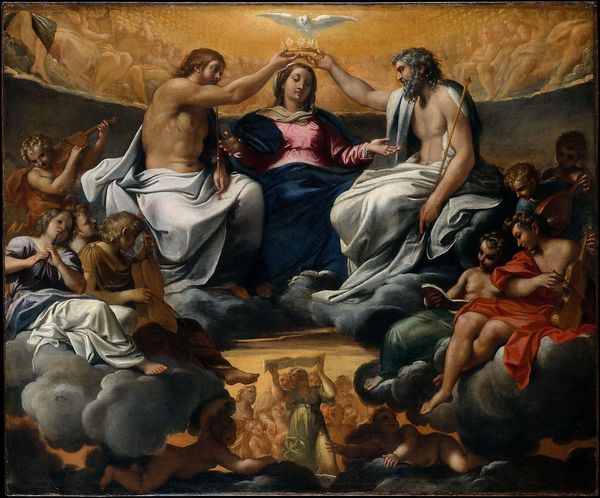
oil-paint
#
portrait
#
allegory
#
baroque
#
oil-paint
#
figuration
#
oil painting
#
mythology
#
history-painting
#
nude
Copyright: Public Domain: Artvee
Editor: Here we have Pompeo Batoni’s "Time Unveiling Truth," painted around 1740, using oil paints. It’s a complex scene with many figures. What strikes me first is the swirling composition and, honestly, the overt display of wealth suggested by the drapery and the bodies themselves. How would you interpret this work? Curator: Focusing on the materiality, consider the availability of pigments in 1740. The vibrant colours and their application point to specific trade routes and artisanal workshops involved. Each layer of paint signifies labour and access to resources. Notice, for instance, how the folds in the fabric are achieved—think about the processes necessary to achieve that effect. How do you think that method of creation impacts the reading of "Truth?" Editor: That's a fascinating point. The very material extravagance becomes part of the allegory, doesn't it? Is Batoni making a statement about the consumption of art in unveiling ‘truth’ itself? Curator: Precisely. Who could afford a painting of this scale, and what statement does it make about their relationship to truth and justice? Moreover, the idealised bodies tell us much about beauty standards and even food availability for those that became the models. The seemingly timeless figures are, in effect, indexes of social history embedded within layers of labour. Where do you see consumption in this scene? Editor: I suppose that’s present even in the tools at the bottom-- the discarded masks, scrolls and broken sculptures…it reads as consumption as deception and fleeting temporal interests defeated by truth. Seeing these allegorical figures through a lens of labor, material access and availability of human resources makes the work more revealing. I see much more. Curator: Indeed, by interrogating the “how” and “for whom”, we start to unravel the very layers of “truth” the artist presents. Editor: Thanks, I appreciate a different perspective. I see what this artwork communicates to today's audience about the social status and artistic practices in 18th-century Europe.
Comments
No comments
Be the first to comment and join the conversation on the ultimate creative platform.
